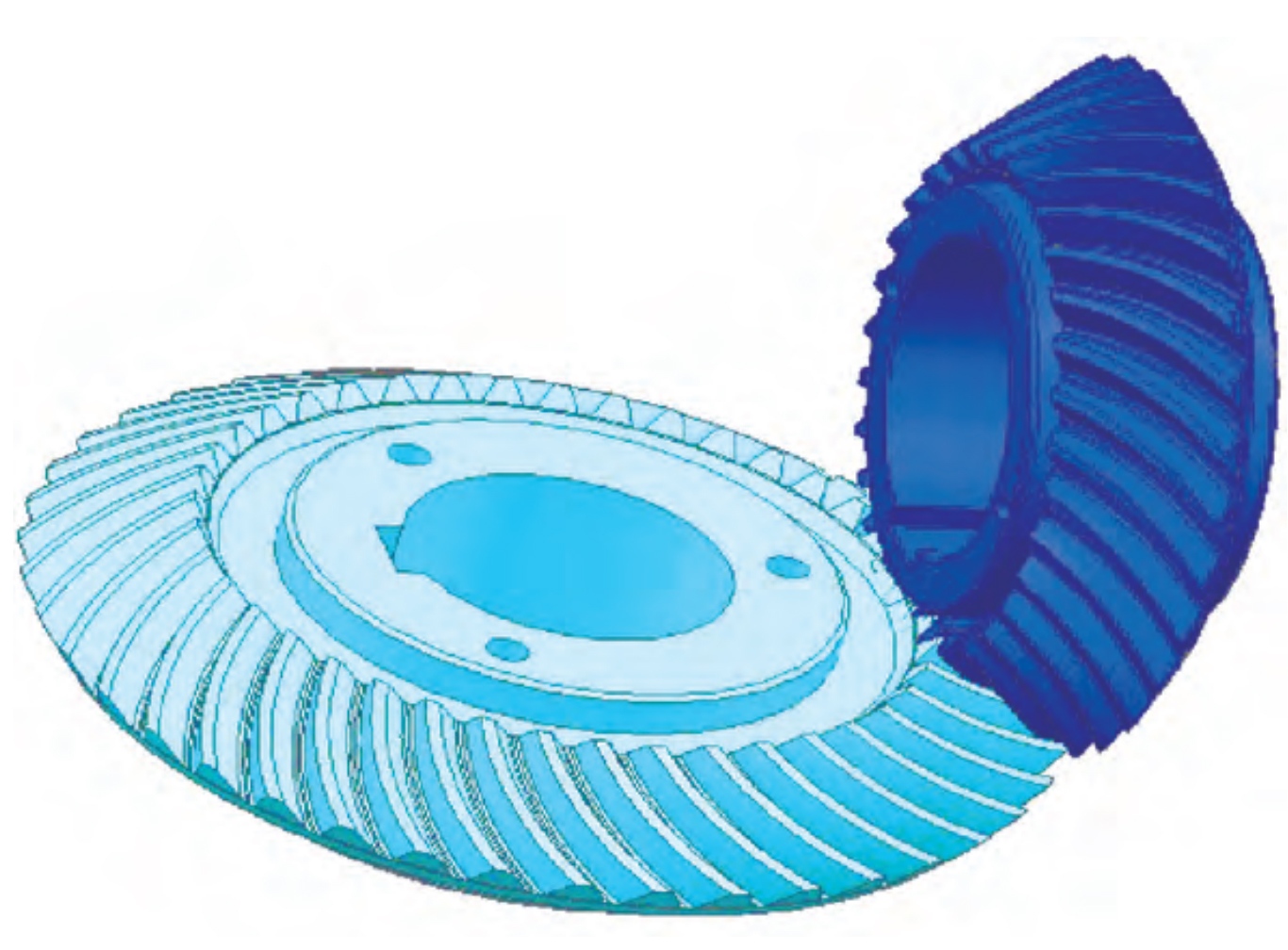Spiral bevel gears are a type of bevel gear used to transmit rotational motion between intersecting shafts. They are widely used in various applications, including automotive differentials, power tools, and industrial machinery. Spiral bevel gears have unique geometry and function that allows for efficient power transmission with reduced noise and improved load-carrying capacity. Let’s take a closer look at their geometry and function.

Geometry of Spiral Bevel Gears:
- Tooth Profile: The teeth of spiral bevel gears have a curved profile in both the axial and radial directions. This curvature is known as the spiral angle or helix angle. The spiral angle varies along the tooth height, resulting in a spiral shape. The spiral angle determines the tooth contact pattern and influences the gear’s performance.
- Crown: Spiral bevel gears have a crown, which is the surface at the midpoint of the tooth height. The crown helps distribute the load over a larger area, reducing the concentration of stress and improving the gear’s load-carrying capacity.
- Tooth Shape: Spiral bevel gears have teeth that are tapered and curved. The tooth shape is designed to ensure a smooth engagement and disengagement of the gears, minimizing noise and vibration.
- Pitch Cone: The imaginary surfaces formed by the tooth tips of the spiral bevel gears are known as pitch cones. The pitch cones intersect at the center point of the gear. The angles at which the pitch cones intersect are known as the cone angles or shaft angles.
Function of Spiral Bevel Gears:
- Power Transmission: Spiral bevel gears transmit power between intersecting shafts that are not parallel. They change the direction of rotation by 90 degrees while maintaining constant speed ratio. This allows the transfer of power between perpendicular shafts.
- Load Distribution: The curved tooth profile and crown of spiral bevel gears help distribute the load over multiple teeth, resulting in higher load-carrying capacity compared to straight bevel gears. This makes them suitable for applications where high torque and heavy loads are involved.
- Noise Reduction: The spiral shape of the teeth and the gradual engagement/disengagement of the gears reduce noise and vibration during operation. This makes spiral bevel gears quieter compared to straight bevel gears.
- Efficiency: Spiral bevel gears have higher efficiency compared to other types of bevel gears. The spiral tooth profile ensures smooth meshing and minimizes frictional losses, resulting in improved efficiency.
It’s worth noting that the design and manufacturing of spiral bevel gears require specialized expertise and precision machining. The gear geometry, tooth profiles, and manufacturing tolerances play crucial roles in achieving optimal performance, durability, and smooth operation.
Spiral bevel gears offer several advantages in terms of power transmission, load-carrying capacity, noise reduction, and efficiency. Their unique geometry and function make them suitable for a wide range of applications where intersecting shafts need to transmit rotational motion.
